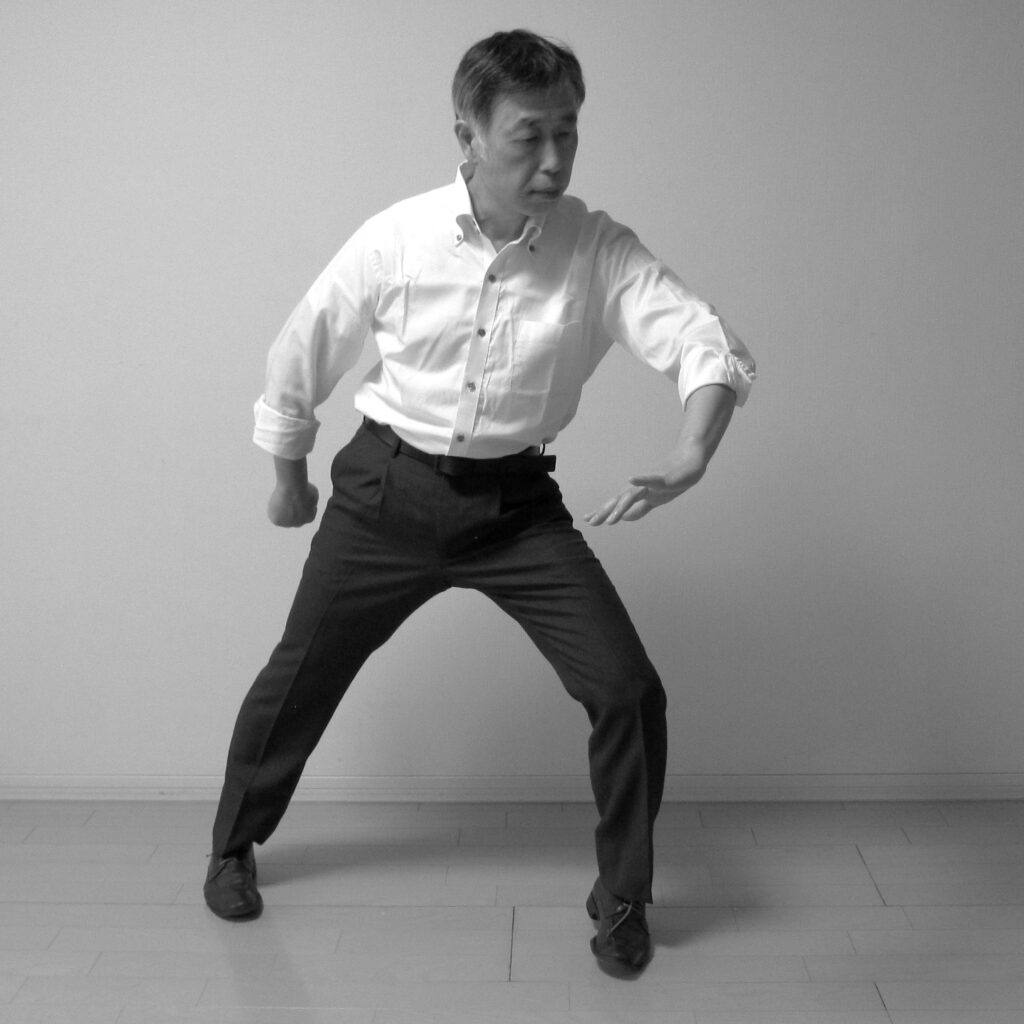
One of the characteristics of Tai Chi is that it is Silk Reeling Force.
Silk Reeling Force stays tense and connects the whole body.
Neutralizing Force (化勁) and Exploding Force (發勁) of Tai Chi could not be explained without the Silk Reeling Force.
I would like to discuss the essence of Silk Reeling Force based on Chen Tai Chi, the origin of Tai Chi.
Tai Chi motion is a combination of defense and attack, and the Silk Reeling Force is the one that makes it possible.
Let’s start with the upper body, Silk Reeling Force.
The basics of hand movements are forward and reverse rotations, which are connected to the body axis.
In Tai Chi, the opponent force is redirected without giving a shock so the opponent cannot respond. It is the Neutralizing Force. Your hand is weighted and heavy, but why it happened.
I will explain step by step.
The basic of hand movements in Tai Chi is Cloud hands with both rotations, forward and reverse. You should practice Silk Reeling Force with Cloud Hands everyday.
Let’s take a closer look at the movements of Silk Reeling Force. First, the middle finger takes the lead, and the spiral kinetic chain goes on with the little finger, pisiform bone (called the little star in martial arts), ulna, elbow, shoulder accordingly. This is the true nature of Silk Reeling Force, and is also the theory that the weight is given to the hands. This movement is same between the forward and reverse rotations. The Center (丹田) unites these movements. The minute movement of the Center is accelerated through the sacrum and spine and instantaneously transmitted to the middle finger, leading to the aforementioned kinetic chain.
Neutralizing Force with touching the opponent hand is relatively easy. Touching has a lot of sensing information so you can respond quickly. In the beginner stage, you may learn Neutralizing Force in a series of push-hand practices. However, it is extremely difficult to deal with spatially separated attacks with Silk Reeling Force. The reason is that the listening in space is the world of martial arts.
It is assumed that the middle finger is used as a radar antenna that senses the opponent’s movement, and that it should be connected to the Center in a spiritual state. This state is called a fighting stance in martial arts.
With synchronizing to the opponent’s initial movement, picking up the opponent punch with neutralization is only possible using the mind, not force. It is the intangible world.
When the opponent punch speed is relatively high, and you use hand muscle power to deal with, you are not making good use of Silk Reeling Force. In this case, you can self-check if the connection with the body axis has been interrupted.
Tai Chi’s Silk Reeling Force applies not only to the upper body, but also to the lower body.
When you apply Neutralizing Force and the opponent does not react and loses his posture completely, or when you hit the punch and give an impact to the opponent inside, you should use Silk Reeling Force of the lower body. The basic stance is as to say bow stance with Silk Reeling Force.
Nowadays, we can see the three types of bow stances used in Tai Chi.

Popularized bow stance (seen in the 24 forms and Yang styles)
Modified bow stance (found in the continental Chen styles)
Traditional bow stance
The popularized bow stance does not angle the front foot and steps straight ahead. It doesn’t take on Silk Reeling Force, and no arch structure is created. However, by extending the knee of the rear leg backward, the effective punch can be relatively easily generated by pushing the sacrum forward. The 24 simplified forms used for healthy exercise and the performance competitions use this bow stance.
Some Yang Tai Chi traditional followers may like this bow stance. However, it would be doubtful that it is called Tai Chi without Silk Reeling Force even in the lower body.
The modified bow stance seems to be prevalent among the people practicing Chen Tai Chi. The angle of the front foot is correct, so that the structure of the arch is created with Silk Reeling Force. However, the angle of the rear leg is incorrect. If this is the case, Silk Reeling Force will also be effective in half. The Chen Tai Chi traditional successors allowed in China also seem to prefer this bow stance. They may intentionally change the traditional bow stance or it is the result that they have lost the tradition.
The original traditional bow stance pushes the sacrum in 3-dimentional movements into the position shown in the figure. The sacrum moves dynamically with the Silk Reeling Force of the two legs. The vibration created in the pushed sacrum will be amplified at the spine and becomes a shock wave of the fist hit. The movement of the toes and the knees accelerates the sacrum and suddenly stops it. If the breathing method is added to this vibration, it will become Exploding Force. These serial events occur almost simultaneously, creating a large shock wave throughout the body. In theory, this is called Exploding Force. I would like to say that the Exploding Force would not be born without the lower body Silk Reeling Force. You should learn it correctly.
When the bow stance position is finalized, some people turn the rear toe inward to correct the foot position. These people don’t use Silk Reel Force, so it is good to be self-checked. The correct Silk Reel Force moves the heel backward.
In addition, Tai Chi’s bow stance is based on the theory of “The Three Tips align with Each Other” (三尖相照). Its force direction is different from the one in Yoga warrior stance. It is noted that if the direction was not correct, it would be meaningless for Silk Reeling Force itself.
